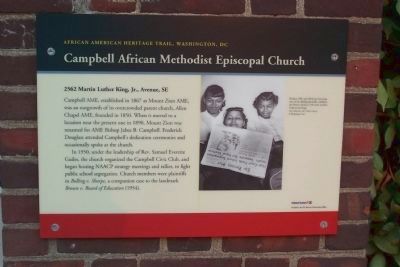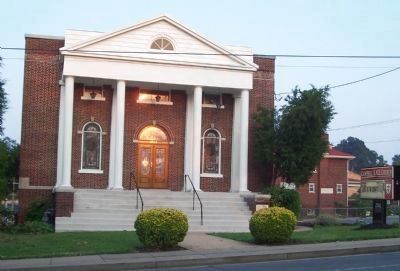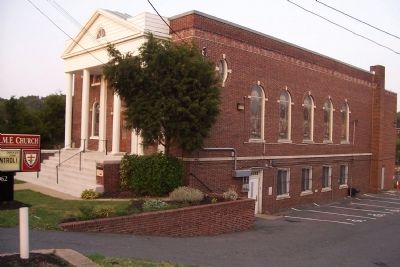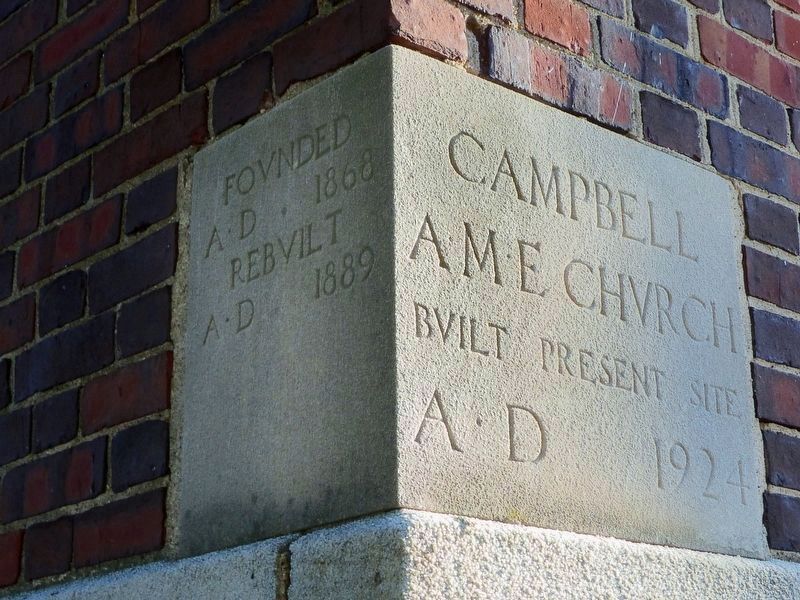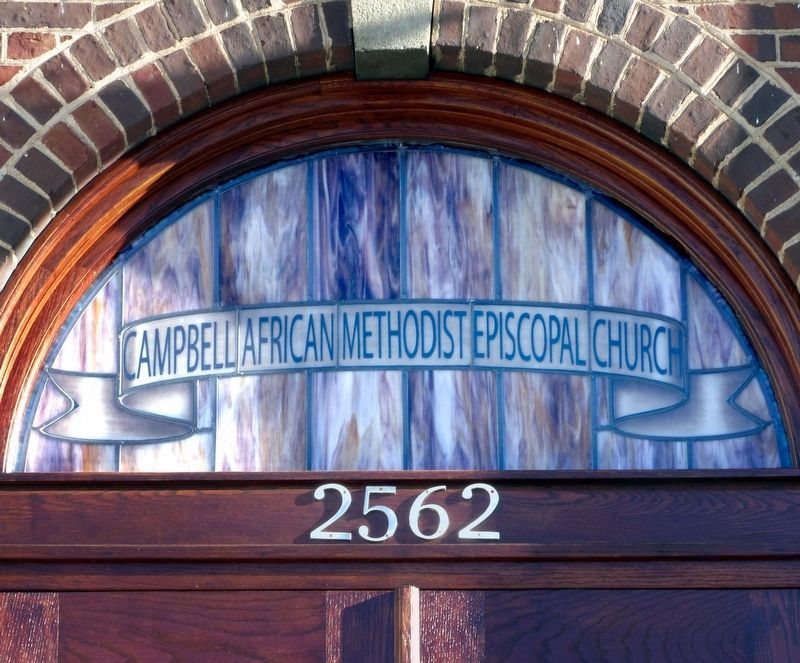Barry Farm in Southeast Washington in Washington, District of Columbia — The American Northeast (Mid-Atlantic)
Campbell African Methodist Episcopal Church
2562 Martin Luther King, Jr. Avenue, SE
— African American Heritage Trail, Washington DC —
Inscription.
Campbell AME, established in 1867 as Mount Zion AME, was an outgrowth of its overcrowded parent church, Allen Chapel AME, founded in 1850. When it moved to a location near the present one in 1890, Mount Zion was renamed for AME Bishop Jabez B. Campbell. Frederick Douglass attended Campbell’s dedication ceremonies and occasionally spoke at the church.
In 1950, under the leadership of Rev. Samuel Everette Guiles, the church organized the Campbell Civic Club, and began hosting NAACP strategy meetings and rallies to fight public school segregation. Church members were plaintiffs in Bolling v. Sharpe, a companion case to the landmark Brown v. Board of Education (1954).
Erected by Cultural Tourism DC.
Topics and series. This historical marker is listed in these topic lists: African Americans • Churches & Religion • Civil Rights • Education. In addition, it is included in the African American Heritage Trail, and the African Methodist Episcopal (AME) Church series lists. A significant historical year for this entry is 1867.
Location. 38° 51.557′ N, 76° 59.701′ W. Marker is in Southeast Washington in Washington, District of Columbia. It is in Barry Farm. Marker is at the intersection of Martin Luther King Jr. Avenue Southeast and Stanton Road Southeast, on the right when traveling north on Martin Luther King Jr. Avenue Southeast. Touch for map. Marker is at or near this postal address: 2562 Martin Luther King, Jr Avenue Southeast, Washington DC 20020, United States of America. Touch for directions.
Other nearby markers. At least 8 other markers are within walking distance of this marker. Barry Farm Dwellings (within shouting distance of this marker); Roads That Divide (about 300 feet away, measured in a direct line); Hillsdale (about 300 feet away); Grandpapa's Farm (about 500 feet away); Faith and Action (about 700 feet away); Bethlehem Baptist Church (approx. 0.2 miles away); The Curative Powers of Nature (approx. 0.2 miles away); A Navy Town (approx. 0.2 miles away). Touch for a list and map of all markers in Southeast Washington.
More about this marker.
[Photo caption:]
Barbara (left) and Adrienne Jennings, two of the Bolling plaintiffs, celebrate the Brown decision with their mother, Luberta Jennings.
Star Collection, DC Public Library : Washington Post
Regarding Campbell African Methodist Episcopal Church. Campbell AME Church dates back to 1850 when members of the local free Black community organized Allen Chapel near Good Hope Village (now Garfield). Allen African Methodist Episcopal Church, as it is now known, remains the oldest Black church in Hillsdale. With the arrival of
the Barry Farm Freedmen's settlement (later renamed Hillsdale) after the Civil War, Allen Chapel grew so large that a group split off in 1867 and formed Mount Zion AME Church on Mount Zion Hill (now Douglass Road). A couple of decades later the church moved to a more accessible location, on Nichols Avenue (today's Martin Luther King, Jr., Avenue). The congregation dedicated its new building in 1890 - in a ceremony attended by Frederick Douglass -- and renamed the church for AME Bishop Jabez Campbell. After the building burned a few years later, the church moved to its present location, on property donated by a church member. The current building was completed in 1938. Under the leadership of Rev. Samuel Everette Guiles, Campbell AME hosted meetings and strategy sessions held by Consolidated Parent Group and the NAACP related to fighting school segregation. The Campbell Civic Club was organized to support these efforts, which led to the Bolling v. Sharpe case.
Among the members of Campbell AME Church were Barbara and Adrienne Jennings, two of the plaintiffs in Bolling v. Sharpe, which became a part of the landmark Brown v. Board of Education (1954). All of the Bolling plaintiffs came from the Hillsdale community.
Cultural Tourism DC
http://www.culturaltourismdc.org/node/1265
Related markers. Click here for a list of markers that are related to this marker.
This is a list of Brown v. Board of Education markers.
Also see . . . Campbell AME Church, African American Heritage Trail. (Submitted on January 16, 2018, by Devry Becker Jones of Washington, District of Columbia.)
Additional keywords. Anacostia; Barry Farm; Hillsdale; National Association for the Advancement of Colored People.
Credits. This page was last revised on March 31, 2024. It was originally submitted on July 29, 2010, by Richard E. Miller of Oxon Hill, Maryland. This page has been viewed 2,550 times since then and 77 times this year. Photos: 1, 2, 3. submitted on July 29, 2010, by Richard E. Miller of Oxon Hill, Maryland. 4. submitted on January 8, 2017, by Allen C. Browne of Silver Spring, Maryland. 5. submitted on January 13, 2017, by Allen C. Browne of Silver Spring, Maryland. • Bill Pfingsten was the editor who published this page.
